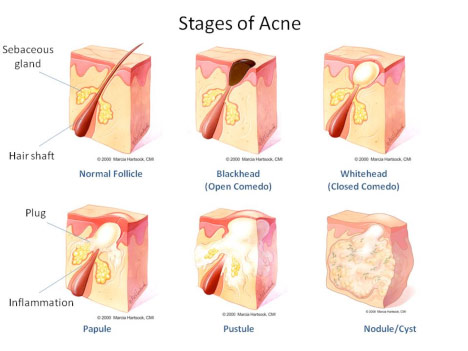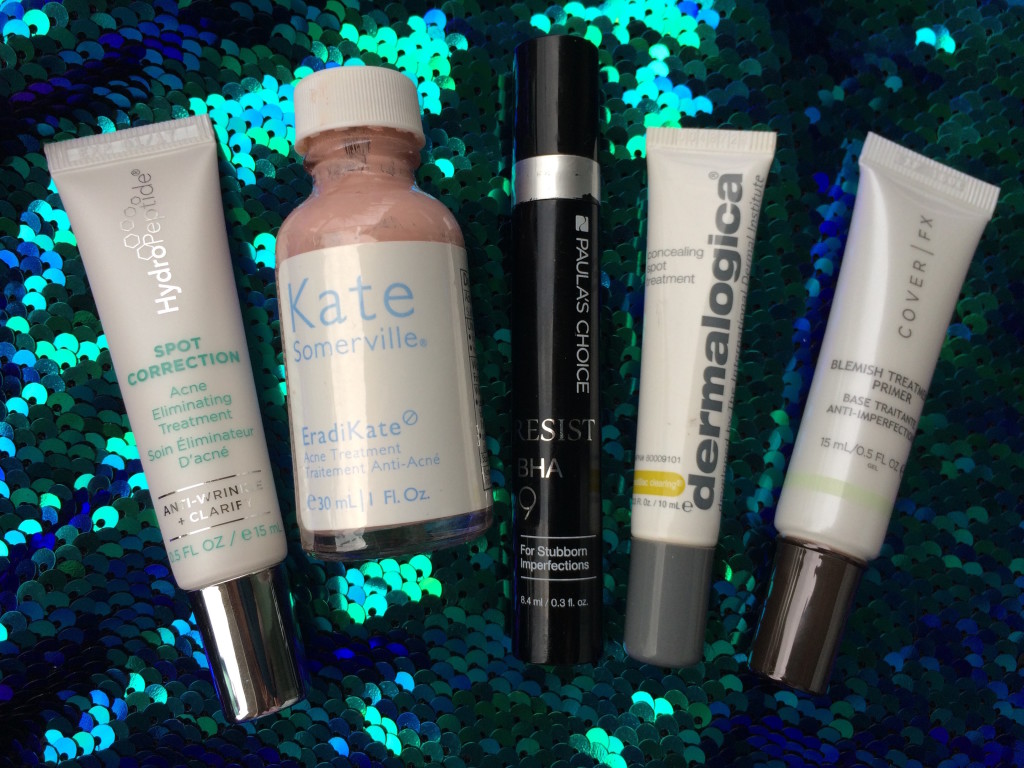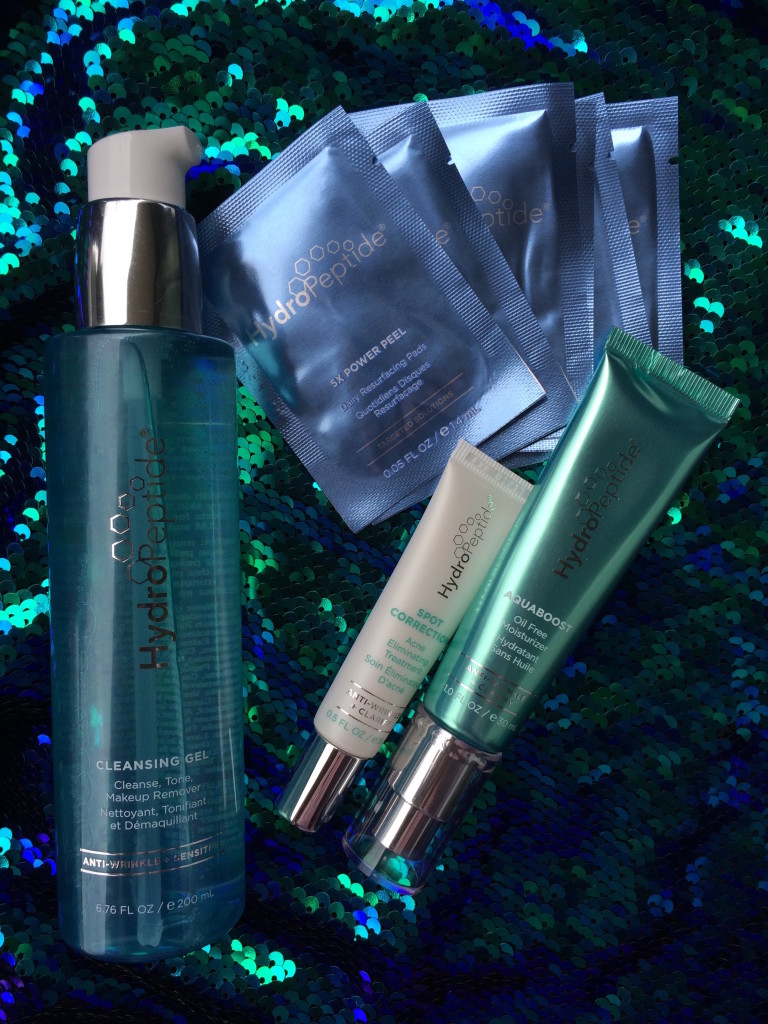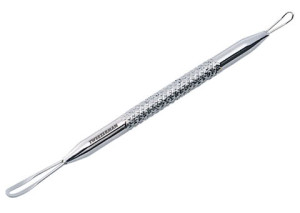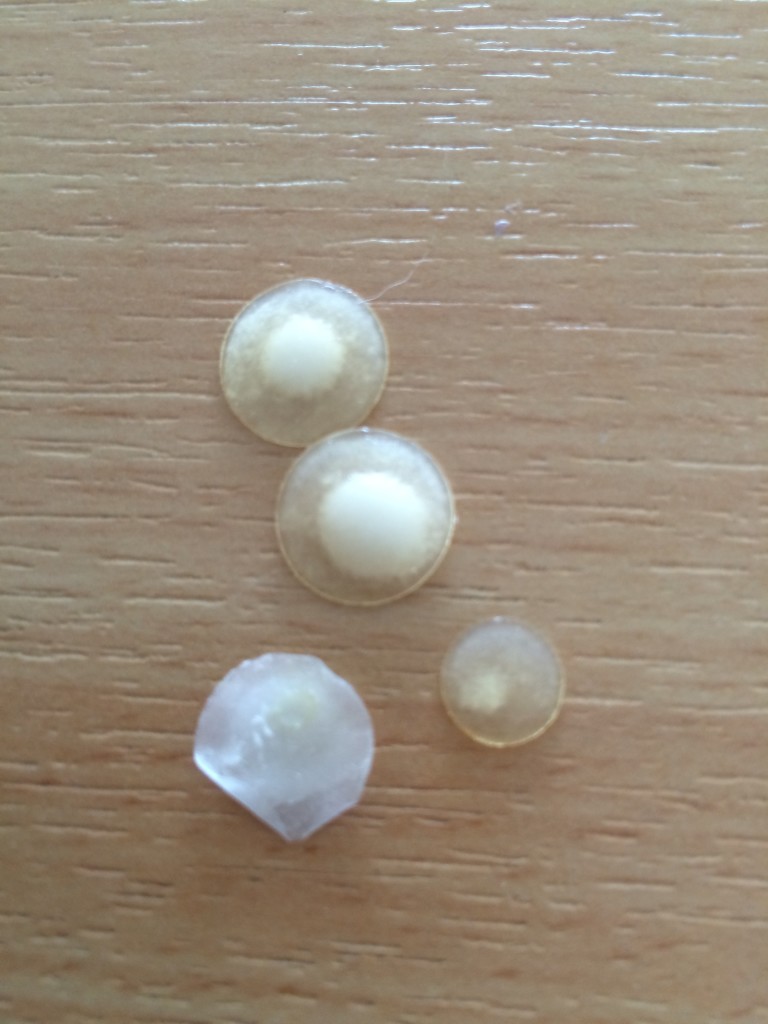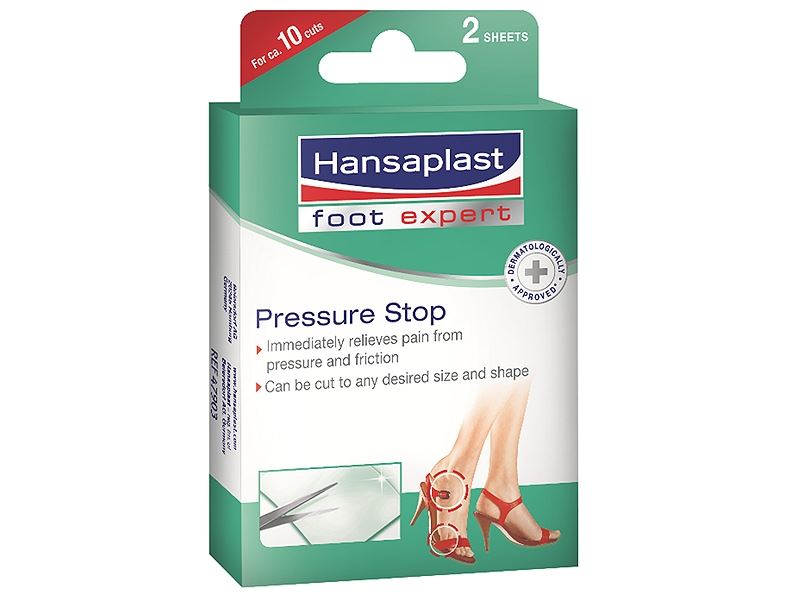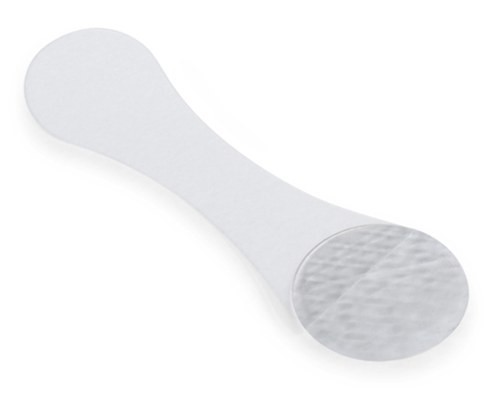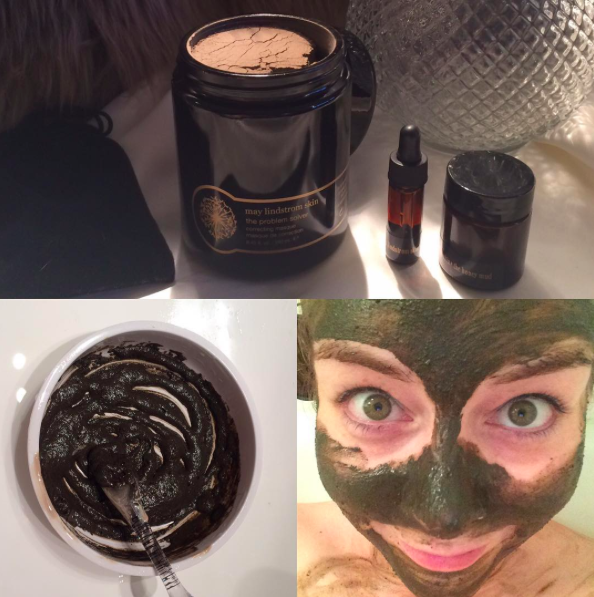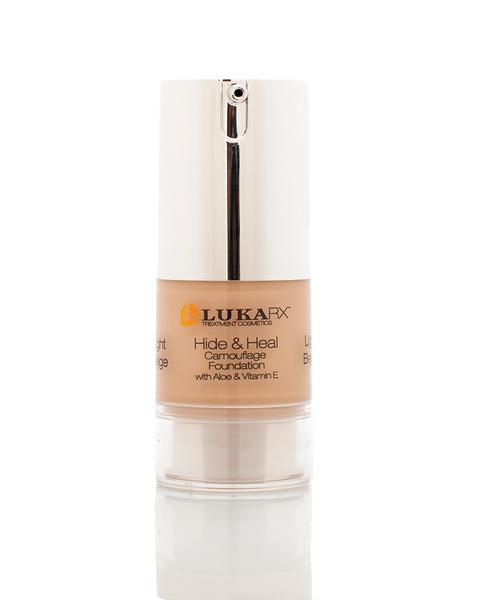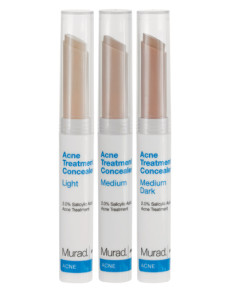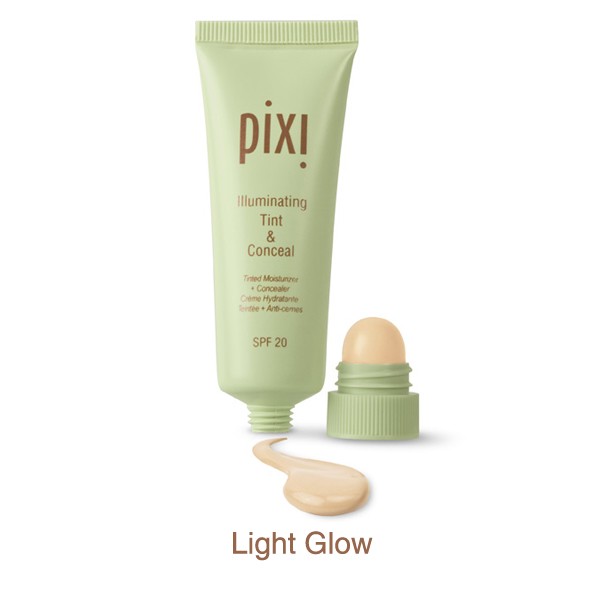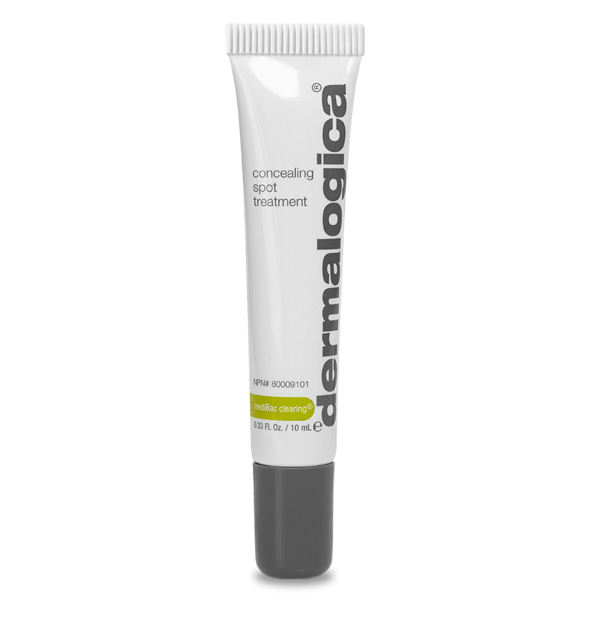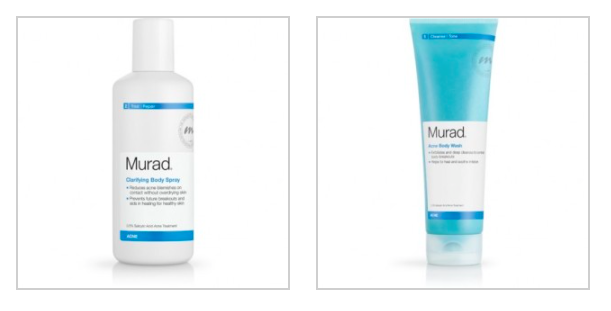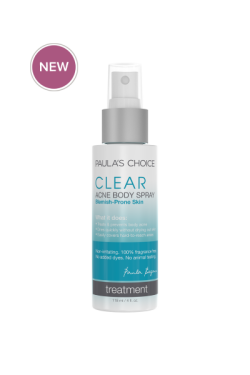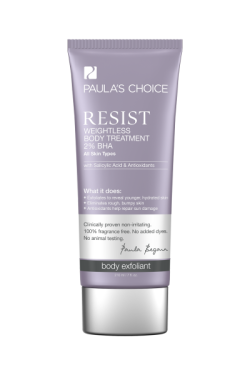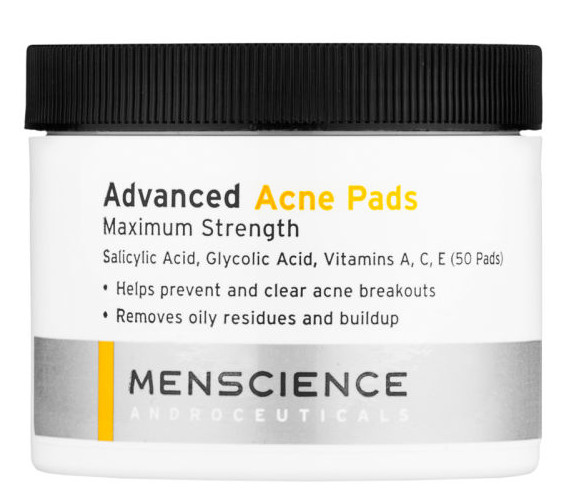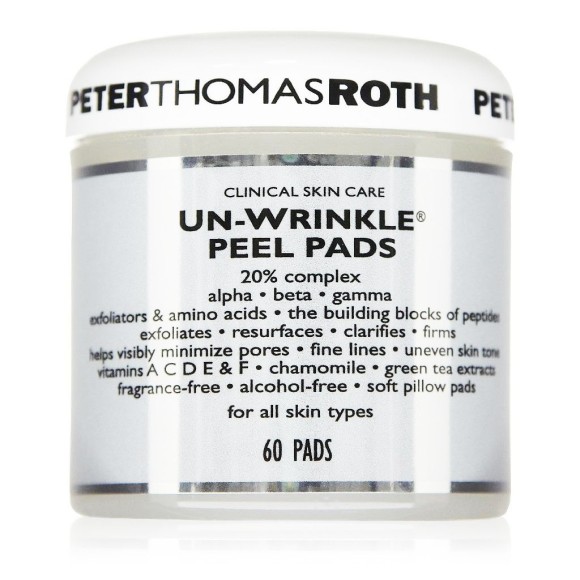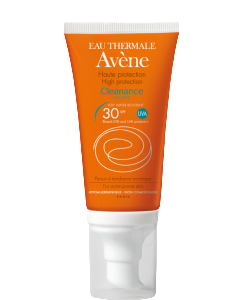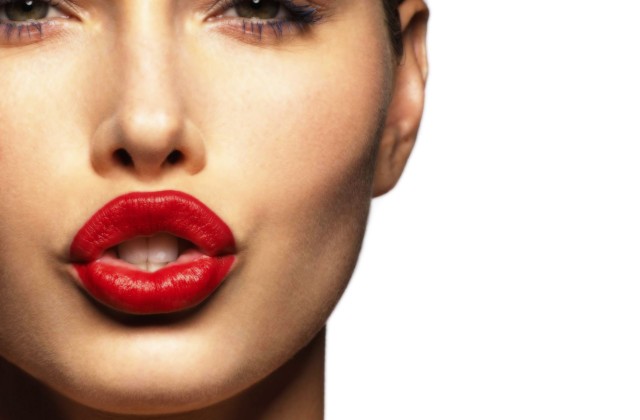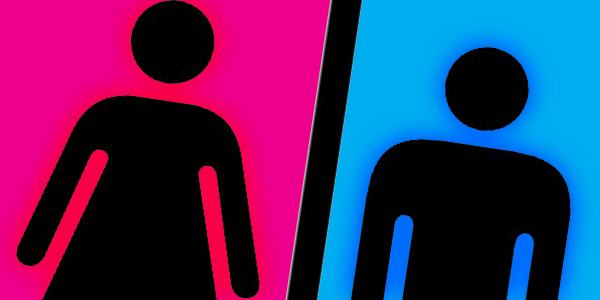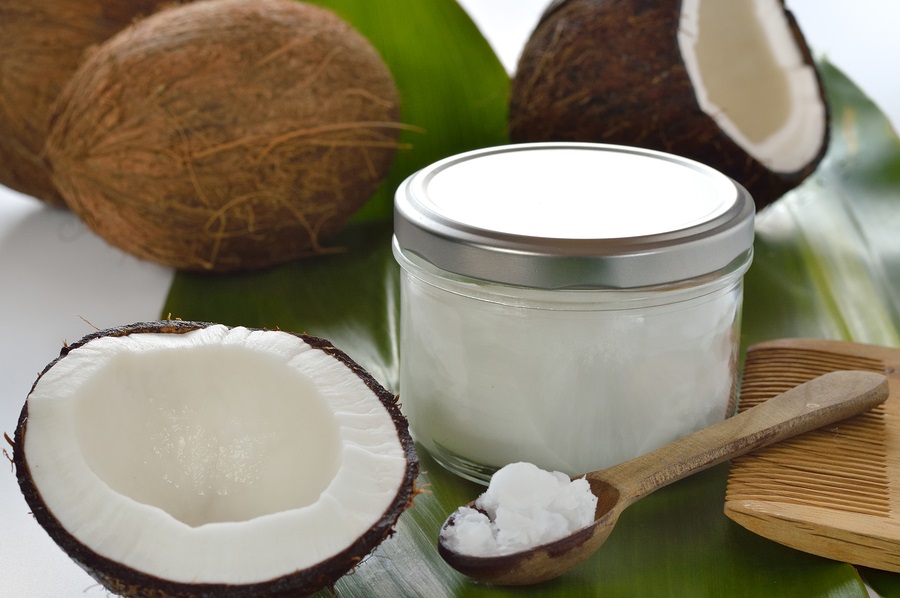The Acne Files: From A to Zit. In depth acne info, causes, best products and treatment.
Types of Acne Vulgaris & Terminology:
Acne Vulgaris is the medical term for what most of us know as acne. Other types of acne, such as gram-negative folliculitis, acne conglobata, acne fulminans, or acne rosacea also exist, but are a lot less common and won’t be discussed in this article.
Papule (regular pimpel): When the inflammation is near the surface and there’s redness with no “head”, you get a papule. It appears as a small (≤ 5 mm), slightly elevated pink bump on the skin and ystan be tender to the touch.
Whitehead (i.e. closed comedone): Comedones are basically pores clogged with keratin. When the oil breaks through to the surface, it appears as a “whitehead”. If the oil becomes oxidised (i.e. acted on by oxygen in the air), the oil changes from white to black, and a “blackhead” is formed.
Blackhead: flat or slightly elevated papules with a central opening filled with blackened keratin. Called “open comedones” because the skin surface stays open.
Pustule (large pimple): A pustule is similar to a whitehead, but is inflamed, and appears as a red spot with a white or yellow centre filled with pus, which consists of a mixture of dead skin cells, bacteria and white blood cells. A pustule that forms over a sebaceous follicle often has a hair in the center. When a pustule heals without progressing to cystic form there is usually no scarring.
A nodules is a large, painful, solid acne spot that is lodged deep beneath the skin. Similar to papules, nodules are solid, irregularly-shaped or dome-shaped lesion. In contrast to a papule, a nodule is characterised by infection, extends into deeper layers of the skin and can cause tissue destruction that ends up in scarring.
A cyst is much like a nodule but is pus-filled and larger (≥ 5mm). The sac-like lesion contains liquid or semi-liquid material filled with bacteria, white blood cells, and dead cells. Larger than a pustule, it may be significantly infected and extends into deeper layers of the skin. Cyst can be very painful and result in scarring. Specialists believe that real cysts are less frequent than we think, and that lesions referred to as cysts are usually critically inflamed nodules.
Nodules and cysts are more resistant to treatment, and respond best to treatment with isotretinoin (retinols).
Acne related:
Sebaceous filaments are normal, naturally occurring, tiny collections of sebum and dead skin cells around the hair follicle, Often around the nose, they’re often confused with blackheads, since they sometimes look like very tiny blackhead collections. Unlike blackheads however, they’re lighter in colour (e.g. with a greyish or yellow tinge), are always there, and can form even patterns on oilier parts of the skin. Extracted blackheads have a plug like appearance, whilst extracted sebaceous filaments are more like free-flowing strands of sebum. Extracting makes little to no difference, since they’ll just fill up again shortly afterwards. Everyone has them, but they may appear more visible if you have larger or clogged pores. They may turn into a blackhead if the sebum in the pore lining is exposed to oxygen, and can be minimised with a good cleanser, a quality clay mask or with salicylic acid (e.g. a BHA exfoliant by Paula’s choice), which can all help draw sebum from the pores.
Keratosis Pilaris (KP / ‘chicken skin’) is a common skin condition in which rough, tiny red or white bumps appear around the hair follicle (often on outer arms or thighs). There is no known cure, but some products have been said to help contain the disorder (e.g. thick, quality moisturisers and BHA exfoliants).
Milia are small, firm white cysts caused by skin cell build up. They can last for weeks up to many months, and often occur around the eyes, or other areas of the face where there normally aren’t any active oil glands. Unlike pimples, squeezing has little to no impact on them. Exfoliation can help, but dermatological extraction is often the only solution.
Folliculitis is the inflammation of on or more hair follicles. Usually caused by a bacterial or fungal infection, it’s often triggered by ingrown hairs.
A macule (flat skin spot or pseudo scar) is the temporary red spot left by a healed acne lesion. Macules usually persist for several days or sometimes weeks before disappearing. Exfoliation is said to speed up healing.
Acne Causes:
The usual suspects are usually hormones, genetics or skin type, but other causes can include:
- hormonal
- repeated friction or rubbing on sensitive skin,
- the grease or pommade from one’s head bangs,
- dirty pillow cases, cell phones or makeup brushes,
- travel (sudden changes in humidity, water, excess sweating etc.),
- physical or psychological stress (which raise cortisol levels: the major stress hormone),
- medical conditions such as polycystic ovary syndrome (PCOS),
- high levels of corticosteroids (e.g. due to Cushing Disease or steroid medication),
- clogged pores (due to dead skin build up, not removing makeup before bed-time etc.).
Getting rid of acne for good
Cleansing
The self-evident first step to keeping zits at bay is good hygiene. Thoroughly cleanse your face twice a day to prevent sebum excess and dirt from clogging your pores.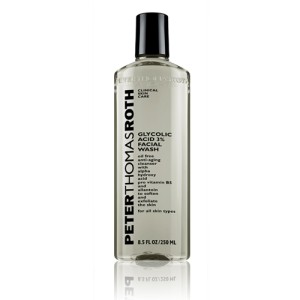
- Remove make up with a gentle make-up remover.
- Wash your face with a Clarisonic (see my Clarisonic article here) and a quality cleanser: e.g. Hydropeptide’s Purifying Cleanser, Avène’s Cleanance Gel for daily use (a bit too runny for my tastes though), or Pete Thomas Roth’s Glycolic Acid cleanser.
- Apply toner on some cotton wool to tone your face and remove any final traces of product.
- Extra: Exfoliate your skin once a week, preferably after steaming, apply a mask for oily skin, and finish off with a toner.
Ingredients to look for in your Products
- Hydroxy-Acids (salicylic acid + glycolic acid): Peter Thomas Roth’s Un-wrinkle Peel Pads and Glycolic Acid 10% Hydrating Gel contain these acids. The new BHA 9 treatment by Paula’s Choice claims to have 9% salicylic acid and is said to work miracles, but is unfortunately not cleared or allowed in European Union countries just yet.
- Prescription tretinoin (Retin-A) or over-the-counter Retinol: To be used at night and sparingly, since it can be drying and become deactivated by sunlight exposure. Pannobase is an OTC product recommended by my dermatologist. My favourite: Vichy Liftactiv Advanced Filler: said to contain the highest levels of retinol available without prescription, although Paula’s Choice Clinical 1 Percent Retinol Treatment may be the actual strongest. La Roche-Posay Redermic has 0,1% retinol. Much more on retinols in this Paula’s Choice article.
- Sulfur & Zinc: The Kate Somerville’s EradiKate sulphur treatment is great, but unfortunately not available in Belgium. Another fantastic sulfur based treatment (with Colloidal Sulfur, Lactic Acid and Sake Peptide) is Hydropeptide’s Spot Correction Acne Eliminating Treatment.
- Benzoyl peroxide or other topical antibiotics: Murad’s spot fix contains micronized benzoyl peroxide or Kate Somerville’s Anti Bac Clearing Lotion has time-released benzoyl peroxide (encapsulated benzoyl peroxide 5.3), although pharmacy products work just as well and are much cheaper here in the EU.
Products & Treatment
Since I am just over 30, I like my products to work both on acne and ageing skin, which is why I’m a big fan of Hydroxy-Acids and Retinoids.
1. After cleansing my face, I apply Peter Thomas Roth’s Glycolic Acid Hydrating gel (with alpha hydroxy acid, whole leaf aloe vera, Vitamin A antioxidants and Vitamins C & E. Lierac’s Comfort Peel (with new generation hydroxy acids (10%) and urea) is also a great products to use on its own or before applying a moisturiser.
2. Next I proceed with the acne treatment, depending on whether I’m going out or staying in, and depending on the type of acne I need to get rid of. When staying in I’ll apply Glamglow’s Supermud or Kate Somerville’s EradiKate locally, when going out I’ll I’ll use a healing, medicated spot concealer, like this one. A new favourite is the Spot Correction Acne Eliminating Treatment by Hydropeptide (after falling in love with this brand’s Eye Authority eye-cream I started testing out their other products and I must say: best brand ever!). Their Purifying Cleansing Gel, Power Peel Pads and Aquaboost Oil Free moisturiser are equally amazing.
3. Blackheads: Scrub regularly, or use the Clarisonic to help keep them at bay. Using acne strips (e.g. by Biore) can help extract them: help the process along by opening up your pores first (after taking a bath for example).
4. Extracting pimples that are just too icky not to: Don’t ever touch your face with unsanitised hands. If you must extract it, use a sterile comedone extractor or push gently, and disinfect the area immediately, following with an anti-bacterial acne treatment, healing salve or hydrocolloid dressing (see point 8). Don’t try to extract cystic type acne or pimples that haven’t “riped” yet or are completely closed, since this will only worsen the matter and encourage scarring. Professional extraction is advised, also, watching these professional extraction videos can be disgustingly yet strangely satisfying.
5. Beginning blemishes: don’t ever try to pop unpoppable zits. Keep them bacteria free by dabbing on some rubbing alcohol and treat the area with a good glycolic acid treatment (or benzoylperoxide cream, which is great for under-the-skin pimples).
6. To shrink an under-the-skin zit instantly, apply ice directly for 1-2 minutes. The cold pressure will reduce swelling and freeze pores, which makes it possible to apply concealer directly afterwards.
7. For larger, open, or oozing pimples, a drawing salve with Ichthyol (ichthammol) and zinc oxide can work miracles. To speeden up the process, apply a (continually) hot wash cloth on top of the pimple for 30 mins to help open pores and soften skin, making it easier for the ointment to draw out the puss. When using this salve, use a bandaid to avoid getting your hair stuck.
8. An easier to use and less smelly miracle worker for oozing pimples is the Avène Cicalfate Drying Antibacterial repair lotion. This puppy dries blemishes out in no time, especially if the pimple is open, since it draws out nastiness at least as well as drawing salve does. It can however cause a bit of a crust afterwards, which I help treat with the Cicalfate repair cream (also good against scarring).
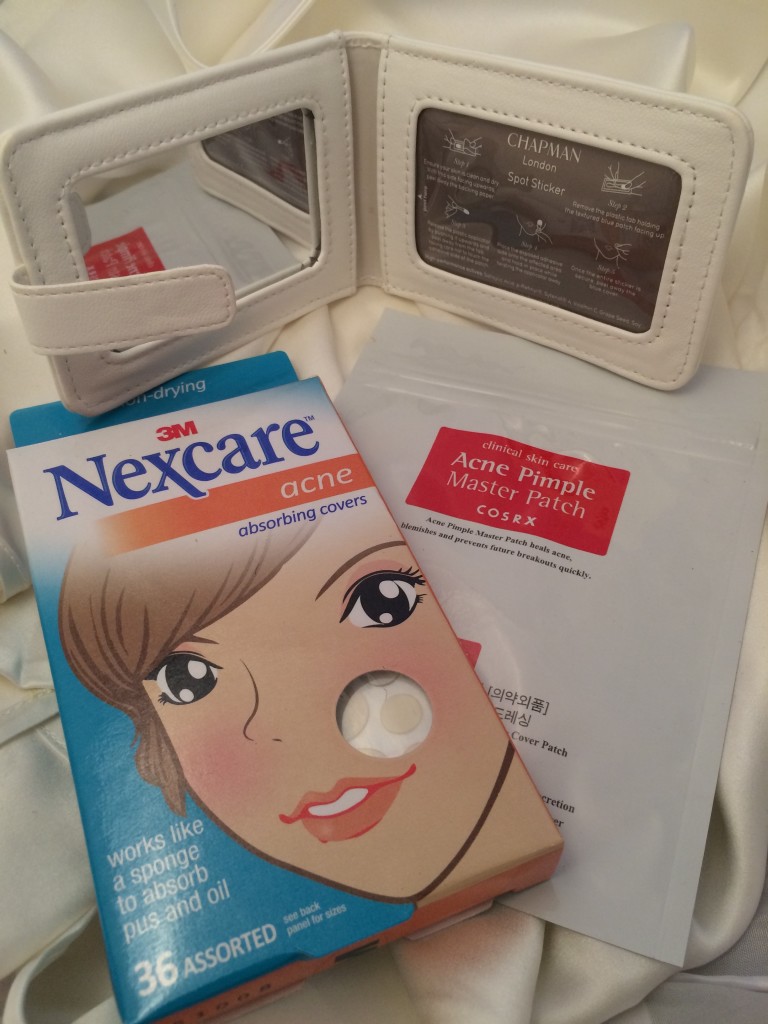
9. If I had to give just one tip to get rid of bumps overnight it would without a doubt be Hydrocolloid dressings and hydrocolloid patches. The most popular hydrocolloid patch is probably Nexcare’s Acne Absorbing cover. Hydrocolloid patches absorb excess sebum and prevent us from touching afflicted areas, reducing inflammation risk. They work by drawing out fluids whilst creating an environment where bacterial growth is made impossible. They are used to promote wound healing and are typically sold as Hydrocolloid wound dressing in larger sizes to help draw out wound exudate. Cutting up larger hydrocolloid dressings to use them as acne patches may be a bit tedious, but can be a more affordable alternative to the smaller ready-to-use acne patches.

1) Korean Acne Pimple Master Hydrocolloid Patch, 2) Coverplast Hydrocolloid patch, 3) Sarah Chapman Skineses treatment sticker
I also tried the Korean Acne Pimple Master Patc by Cosrx and love them too. Almost identical to the Nexcare acne covers, they are a bit thinner and a whiter, making them a bit less noticeable. I tend to use the Nexcare patches for the worst spots, sicne they’re thicker and absorb slightly more sebum, and the ones by Cosrx when I want it to be discrete. Unfortunately these 2 favourites of mine are difficult and expensive to get your hands on in Belgium. Since I recently ran out, I bought some hydrocolloid patches at my pharmasist by Coverplast. These are the thinnest of the three and stick extremely (a bit t00) well, but unfortunately have much less absorbing power than the first 2. Note: hydrocolloid patches work best on raised or open pimples. A well-written explanation on how these puppies work can be found on the LabMuffin Blog.
Another option is cutting out your own hydrocolloid bandages into smaller acne spot treatment patches. Compeed blister patches don’t work well for pimples in my experience, since they form too much of a gel and tend too stick to the pimple too much. On the other hand, Delhaize’s hydrocolloid blister patches work well , are thin and discreet, and not too expensive. My favourites are the cut-out “Pressure Stop” hydrocolloid sheets by Hansaplast (foot expert line): these will flatten out bumps overnight and absorb the best out of all the hydrocolloid bandages I’ve tried out.
10. A luxury version of the spot treatment sticker is the ultra sanitary but excessively packaged Sarah Chapman Skinesis Spot Sticker with salicylic acid. I love that they’re so thin and invisible and could even be worn out, and the cute handy pouch I will use until the end of time, but they’re ridiculously expensive (25 euros for 16 stickers), and after extensive testing I must say Cosrx and Nexcare’s hydrocolloid stickers are by far the most effective (see icky yet impressive picture of what they absorb as proof).
11. Ingrown hairs occur more frequently in curly haired people, or people who wax or pluck, since the hair needs to start growing from scratch and can get stuck under the skin. Exfoliating and switching to shaving can help. Don’t shave too closely though, and shave with the direction of the hair.
12. Once or twice a week, I treat myself to a purifying mask. My all-time favourite is The Problem Solver by May Lindstrom. This powder mask is to be mixed with water and costs a whopping $90, but will last forever since the pot is huge and it’s in powder form. Keeping in mind how many uses you get out of this holy grail product, it’s actually really affordable. For even better results, mix it in with The Honey Mud: an ultra soothing, heavenly smelling purifying mask by the same brand.
Camouflage blemishes without worsening them
A concealer for blemishes shouldn’t clog pores and make things worse, it should ideally contain ingredients that help treat them at the same time. After using Clinique’s clearing concealer for years I switched to Murad’s Acne Treatment Concealer (with sulphur) which provided good coverage and claimed to treat pimples at the same time. I found something even better though, and now use nothing but Luka Cosmetics Hide & Heal Camouflage foundation for hiding imperfections (I wrote a review about this wonderful foundation / concealer here.)
Full camouflage routine:
- Begin with a moisturiser and optionally follow with a silicone-free primer, such as the award-winning Organic Primed & Plumped Face Primer by Luka Cosmetics, which contains nothing but beneficial skin care ingredients.
- Apply foundation or BB / CC cream. (I avoid using foundation as much as possible in times of break outs and use a quality BB or CC cream instead – unless you use a quality non-comodogenic foundation with beneficial ingredients for the skin such as The Treatment Fluid foundation by La Mer or Luka Cosmetics’ Hide & Heal Camouflage Foundation)
- If your blemish is red, consider applying a green concealer stick to neutralise the reddish hues.
- Use a non-comodogenic concealer. I currently use the Luka Cosmetics Hide & Heal Camouflage Foundation to conceal any spots (or do nothing else than this step on lazy days). I also like Estee Lauder’s long lasting Double Wear concealer, although I trust it less on active pimples.
- Finish off with translucent powder to set everything into place (e.g. with The Powder by La Mer or or Hyaluronic Hydrapowder by By Terry).
Other concealers that claim to speed up the disappearance of blemishes:
Body Acne
Bacne or body acne can be treated in largely the same way as facial acne.
Use your Clarisonic pro or a good bodyscrub to exfoliate (Murad’s Acne Body Wash scrub is pretty good, but there are equally good exfoliators out there that cost way less), and add a treatment afterwards to dry out acne.
I’m pretty fond of Murad’s clarifying body spray with with antibacterial Triclosan and Salicylic Acid, and a handy 360 degree nozzle making it easy to spray hard to reach places, even upside down.
I’ve yet to try out Paula’s Choice Resist Weightless Body Treatment with 2% BHA (also supposed to work well for people with Keratosis Pilaris) or Clear Acne Body Spray with 2% Salicylic Acid. I’ve read good things about both and am fond of the brand, so I’ll surely be trying them out if my body bumps ever return.
In a Rush?
When you really don’t have the time and need to half-ass your routine, there are decent short cut aids out there: e.g.
- Korres pomegranate cleansing wipes (my favourites) or Dermalogica’s skin purifying wipes to cleanse,
- followed by the Peter Thomas Roth’s Un-Wrinkle Pads (Glycolic Acid Complex 10%, Salicylic Acid, soothing Arginine, Allantoin, whole leaf Aloe Vera, extracts of Chamomile and Green Tea),
- or slightly cheaper Menscience Advanced Acne pads with 2% salicylic acid, glycolic acid, Vitamins A, C and E, tea tree extract and witch hazel.
Other solutions
Before splurging on acne products, consider whether your acne isn’t caused by hormones, stress, or an unhealthy lifestyle.
- Use sunscreen! The sun may temporarily dry out pimples and hide discolouration, but they’ll flare up even worse when this short term effect wears off. Explanations for this vary, ranging from increased sebum production due to drier skin, more dead skin cells causing blockages in pores, or extra production of free radicals, which reduce the skin’s ability to heal and repair. Moreover, sun damage makes skin more rough and leathery, making it more difficult for dead cells to rise to the skin’s surface and shed normally. Beware of not using an overly greasy sunscreen though, since this can aggravate acne. Avène’s Cleanance sunscreen is my all time favourite for oily skin.
- Blue and red led light therapy have been proven to work, especially professional treatment or Quasar devices. More on the subject here.
- If your budget can take it, professional fractional laser treatment can be an option.
- Smoking will make acne worse – logical since (i.a.) it inhibits proper blood flow.
- Drink plenty of water.
- Hygiene: This may be self-evident, but make sure your pillow case is always clean and you regularly wash, disinfect and/or replace your Clarisonic brushes, make up tools and anything else that comes in contact with your face. Also don’t touch your face with unwashed hands, and never poke at a pimple unless everything is sanitised. Greasy bangs may also aggravate outbreaks.
- Chemical Peels or Laser treatments.
- Consult your dermatologist if the problem persists. They may prescribe Accutane (Vitamine A medication / Isotretinoin – again: dangerous if pregnant and has to be monitored by a pro), an anti-conceptive like Diane or Bellina (when the cause is hormonal), or oral antibiotic treatment such as Minocycline or Tetralysal (usually prescribed when the main suspected culprit is bacteria).
